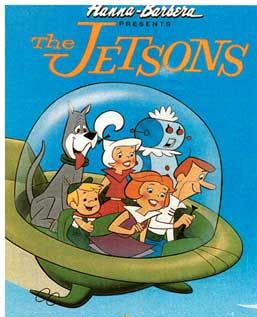Just because you’re a tennis player doesn’t mean you can avoid war.

I’m still in the small town of Menomonie, a river town in the western part of Wisconsin in the U.S. I’m staying with a family of Norwegian heritage so Christmas Eve dinner was a smorgasbord of elk burger meatballs, boiled shrimp, crackers and artichoke dip, chocolate covered almonds, a cranberry and pear sparkling beverage and those peanut butter chocolate kiss cookies I mentioned last time.
We spent the evening watching the first season of The Jetsons, a futuristic animated series of 24 episodes that ran during 1962 and ‘63. Life hasn’t progressed as far as The Jetsons predicted. Flying pizzas don’t pop out of the Food-A-Rac-A-Cycle instantly and young Elroy isn’t transported to the Little Dipper elementary school via pneumatic tube. We do have robotic vacuum cleaners but we don’t have Rosey the Robot maids. There are a number of other ways we’ve fallen short so let’s get to part III of this year’s tennis retrospective and see what happened.
Just because you’re a tennis player doesn’t mean you can avoid war. We certainly haven’t made much progress in preventing war. The U.S. can’t even end the wars it starts. For the second decade in a row we’re fighting Iraq (see Operation Desert Storm for the first version). In many wars government officials and other high profile citizens become targets of attack and that can includes athletes. In May, the coach of Iraq’s national tennis team and two of his players were gunned down in southwestern Baghdad by unnamed assailants. Two weeks ago, the coach of Iraq’s Olympic cycling squad was kidnapped and killed. He had just returned with his team from the Asian Games. War spares no one and for athletes it’s harder to hide. They might be figureheads even though they may have no connection to the warring factions. They make good bargaining chips for a ransom and notable targets for retaliation. The saddest thing of all? These athletes are probably being targeted because the insurgents are running out of high profile targets since so many civilians have already been killed.
”It’s not the equipment, dude.” This was Andy Roddick speaking in an interview with Peter Bodo earlier this month. You can’t blame the current speed of tennis on the equipment because most players have been using the same rackets for years. They may paint their racket to look like a current model but it’s just a paint job. No, it’s the courts. They’re slooooow. The courts are slower and the balls are bigger. You slow a court down by making it less slick and increasing the bounciness. Balls that used to bounce a few times at Wimbledon now bounce three or four times which is perfect for the moonballer Rafael Nadal and helps explain his unexpected run to the Wimbledon final. You can also slow the game down by making the balls bigger. That makes it harder to hit a 150mph serve and gives the returner more time to react. You could also doctor the balls. Britain’s perennial Wimbledon disappointment, Tim Henman, was shocked to learn that Wimbledon officials were storing game balls in a cooler before the tournament started. His own country was undermining its serve and volley master by putting the balls on ice. Did they want him to win his home tournament or not? No, they didn’t. Not if it meant another Wimbledon featuring matches with four or five aces in a row and rallies ending after two or three strokes. I suppose I understand. You want to see someone do something more than slam serves to win the vaunted Wimbledon title. But the grass court season is only four weeks long. Can’t we have slam bang tennis at least four weeks out of the year?
See also:
Memento 2006: Transcendental Moments In Tennis Part II
Memento 2006: Transcendental Moments In Tennis Part I